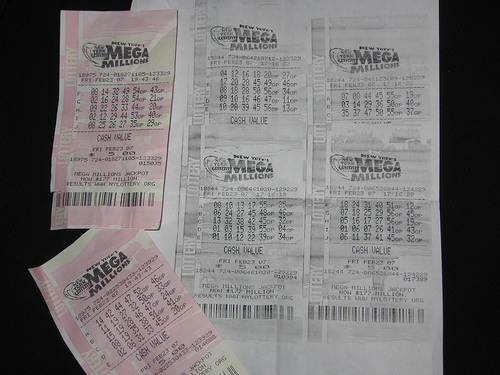Mega Millions Winner!
 If you win a Mega Millions Jackpot of $500 million, you can either take a lump-sum payment of $360 million, or take an annual payout of $19 million a year over 26 years. In both cases, you will receive a payment today.
If you win a Mega Millions Jackpot of $500 million, you can either take a lump-sum payment of $360 million, or take an annual payout of $19 million a year over 26 years. In both cases, you will receive a payment today.
What discount rate (in %) would make you indifferent between these two payment options?
Ignore taxation rates.
Image credit: Flickr msspider66
The answer is 2.73.
This section requires Javascript.
You are seeing this because something didn't load right. We suggest you, (a) try
refreshing the page, (b) enabling javascript if it is disabled on your browser and,
finally, (c)
loading the
non-javascript version of this page
. We're sorry about the hassle.
This is a case of equating the present values of two methods of payment. The present value of 26 annual payouts of $19 million with discount rate r is given by:
V 0 = 1 9 + 1 + r 1 9 + ( 1 + r ) 2 1 9 + . . . + ( 1 + r ) 2 5 1 9
= 1 9 n = 0 ∑ 2 5 ( 1 + r ) n 1 = 1 − 1 + r 1 1 9 ( 1 − ( 1 + r 1 ) 2 6 ) = 3 6 0
Using numerical method, we find r = 2 . 7 3 %
I used Newton's method with a spreadsheet (see below):
We can also use the Internal Rate of Return (IRR) function in a spreadsheet (see below). Please note that the year-1 net cash flow is − 3 6 0 + 1 9 = − 3 4 1 . How IRR function is keyed in is also shown (=IRR(B2:AA2,0). The 0 entered is the guessed value for the rate.